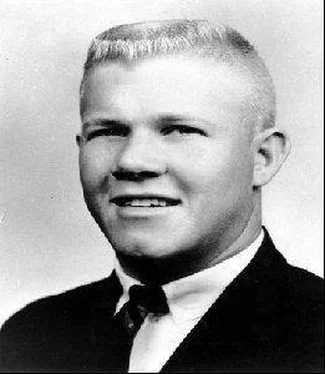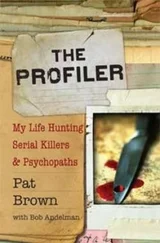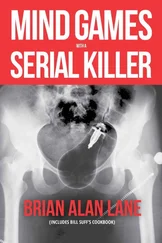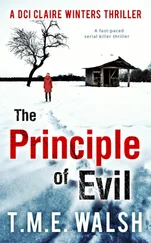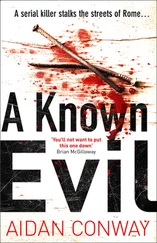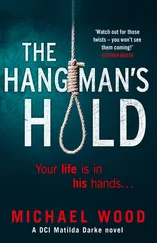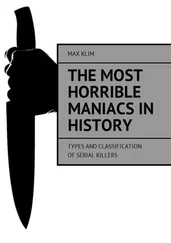Investigation
While Gacy was awaiting trial for the assault of Jeffrey, on December 11, 1978 he went into a pharmacy to discuss a remodeling job with the storeowner, Phil Torf. Robert Piest, fifteen, overhearing Gacy telling Torf that his firm hired teenage boys, told his mother that a contractor wanted to talk to him about a job, and left the store to talk with the contractor, never to return. The boy’s mom filed a missing persons report and the owner of the store told police that the boy left the store to talk to John Gacy. The police called Gacy the next day and he denied even talking to the boy, promising to come to the station to make a statement confirming what he said. He arrived at the police station the next day covered in mud, claiming that he’d been in a car accident, and totally denied any involvement in the boy’s disappearance.
When the police did a background check on Gacy, they discovered he was awaiting trial on battery charges, and that he had served time in Iowa for sodomy. Based on this information, the police believed Gacy was lying and involved with the disappearance of Robert Piest. The police requested a search warrant of Gacy’s property, which was granted on December 13, 1978.
Several suspicious items were revealed during the search: driver’s licenses for different people, a high school ring engraved 1975, books on homosexuality and pederasty, handcuffs, a piece of two-by-four with holes drilled in the ends, a syringe, boys’ clothing, and a photo receipt from the pharmacy where Robert Piest worked part-time. While police continued with their investigation, they decided to assign two two-man surveillance teams to follow Gacy. Gacy, however, picked up on the surveillance and demanded the police cease their operation. When they did not comply, Gacy filed a three quarter million dollar civil law suit against the Des Plaines Police Department. The hearing was scheduled for December 22, 1978.
Meanwhile, the investigation continued, and interesting things started to pop up. Police were informed of Gacy’s employee, Gregory Godzik’s disappearance, the disappearance of John Butkovich, and that the high school ring found in Gacy’s house belonged to another missing person, John Szyc. Another employee revealed that Gacy made him dig trenches in the crawl space of Gacy’s house.
On the 21 of December, just one day before Gacy’s civil suit against the police, a second warrant was obtained to search his house; in particular, to search the crawl space. Upon digging in the crawl space, police discovered several human bones.
Arrest
Gacy told police officers that he wanted to “clear the air” after being informed that they had found human remains. While being interrogated, Gacy confessed to the police that since 1972, he had murdered approximately twenty-five to thirty people. He went on to tell the police and the district attorney about how he would abduct his victims, torture them, rape them, and eventually kill them and dispose of their bodies.
Gacy said that he would pour quicklime into the crawl space from time to time to hasten the decomposition of the corpses, and said that he had lost count of the number of victims he’d buried there. He told police that the last five victims were thrown off the I-55 bridge into the Des Plaines river as the crawl space under his house had become full. He confessed to strangling young Robert Piest and disposing of his body in the river. He told them he had buried John Butkovitch under his garage. Police eventually recovered four of the five victims in the river.
Between December 1978 and March 1979, criminal technicians commenced to search and remove bodies from Gacy’s property. In total, twenty-nine bodies were unearthed, giving families back their loved ones for proper burial. In several cases, bodies still had the ligatures knotted around their necks. Others had gags deep down in their throats.
Identifying the victims took time. Some were identified through their known connection with Gacy. Others by personal affects found at the property. One victim, Michael Bonnin, seventeen, was identified when his fishing license was found at the scene. Of Gacy's identified victims, the youngest were Samuel Stapleton, fourteen, and Michael Marino, fourteen. The oldest were Russell Nelson, twenty-one, and James Mazzara, twenty-one. Eight of the victims have yet to be identified.
On April 9, 1979, Robert Piest's body was discovered on the banks of the Des Plaines River. His autopsy revealed that paper-like material had been shoved down his throat while he was alive.
Trial
On February 6, 1980, the trial of John Wayne Gacy started in Chicago before Judge Louis Garippo. Gacy was charged with thirty-three counts of murder. Due to the overwhelming media attention in Chicago, the jurors had to be selected from Rockford, Illinois.
Before going to trial, Gacy’s lawyers spent hundreds of hours with doctors at the Menard Correctional Center while psychiatrists conducted tests to determine whether Gacy was mentally fit to stand trial. Gacy, with all his wisdom, tried to convince the doctors that he suffered from multiple personality disorder, but the doctor’s decided otherwise. His lawyers opted to plead not guilty by reason of insanity, and did manage to find experts who testified at the trial that they believed Gacy to be a paranoid schizophrenic who indeed suffered from multiple personality disorders. The prosecution’s experts, however, stated that Gacy was sane and in full control of his actions. They produced numerous witnesses to testify that his actions were premeditated. Employees testified about digging trenches for Gacy, which they were told was for some kind of drainage system.
The trial went into its fifth week with the prosecution bringing in dozens of people to testify. The defense only brought in a few people, which infuriated Gacy. On March 11, 1980, both sides began their final arguments. Terry Sullivan, the prosecutor, presented a summary of Gacy’s history of abuse on youths and recapped the testimony given by the surviving witnesses, Donnelly and Voorhees, who had been abused and tortured. After four hours of summation, Robert Motta, for the defense, rebutted the doctor’s testimony for the prosecution and tried to portray Gacy as a “man driven by compulsions he was unable to control.”
It took the jury less than two hours deliberation to find John Wayne Gacy guilty of all thirty three murders. The defense asked for life without parole, but the prosecution was adamant that he wanted a death sentence for Gacy, which had only came into effect in June of 1977 in the state of Illinois. The jury deliberated again on the fate of Gacy and in only two hours sentenced him to death.
Execution
On May 9, 1994, Gacy was transferred to the Stateville Correctional Center to be executed. That afternoon he was allowed a picnic on the prison grounds with his family. That evening, a priest prayed with him before going to the chamber.
Prior to beginning of the execution, the chemicals unexpectedly solidified, clogging the I.V. tubing so that the team had to replace the clogged tube and start over. The procedure took eighteen minutes to complete. Before the chemicals started to flow, Gacy was asked if he had any last words. His reply was, “Kiss my ass.” William Kunkle was one of the prosecutors. He summed up the execution pretty good by saying, “He still got a much easier death than any of his victims. In my opinion he got an easier death than he deserved, but the important thing is that he paid for his crimes with his life."
Ted Bundy
Victims (30+)
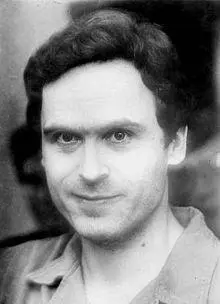
Background
Theodore “Ted” Bundy was born on November 24, 1946 in Burlington, Vermont, to Eleanor Cowell. The identity of his father was never determined. It is suspected that Bundy’s father was Eleanor’s abusive and violent father, Sam Cowell. Bundy was raised by his grandparents in Philadelphia, told that they were his parents and Eleanor was his big sister. Bundy didn’t find out the truth about his birth records until 1969 and then resented his mother for lying about his identity.
Читать дальше
